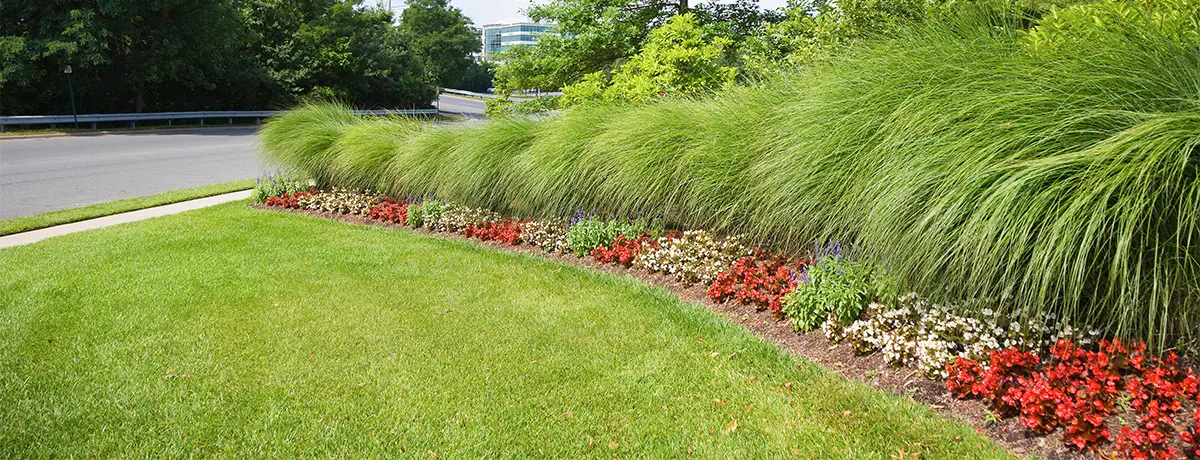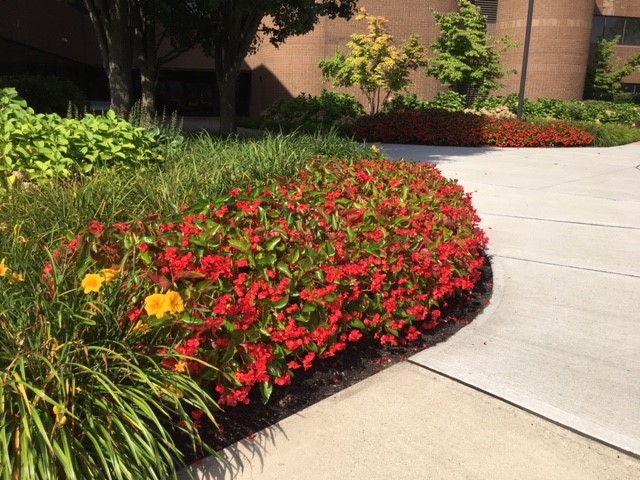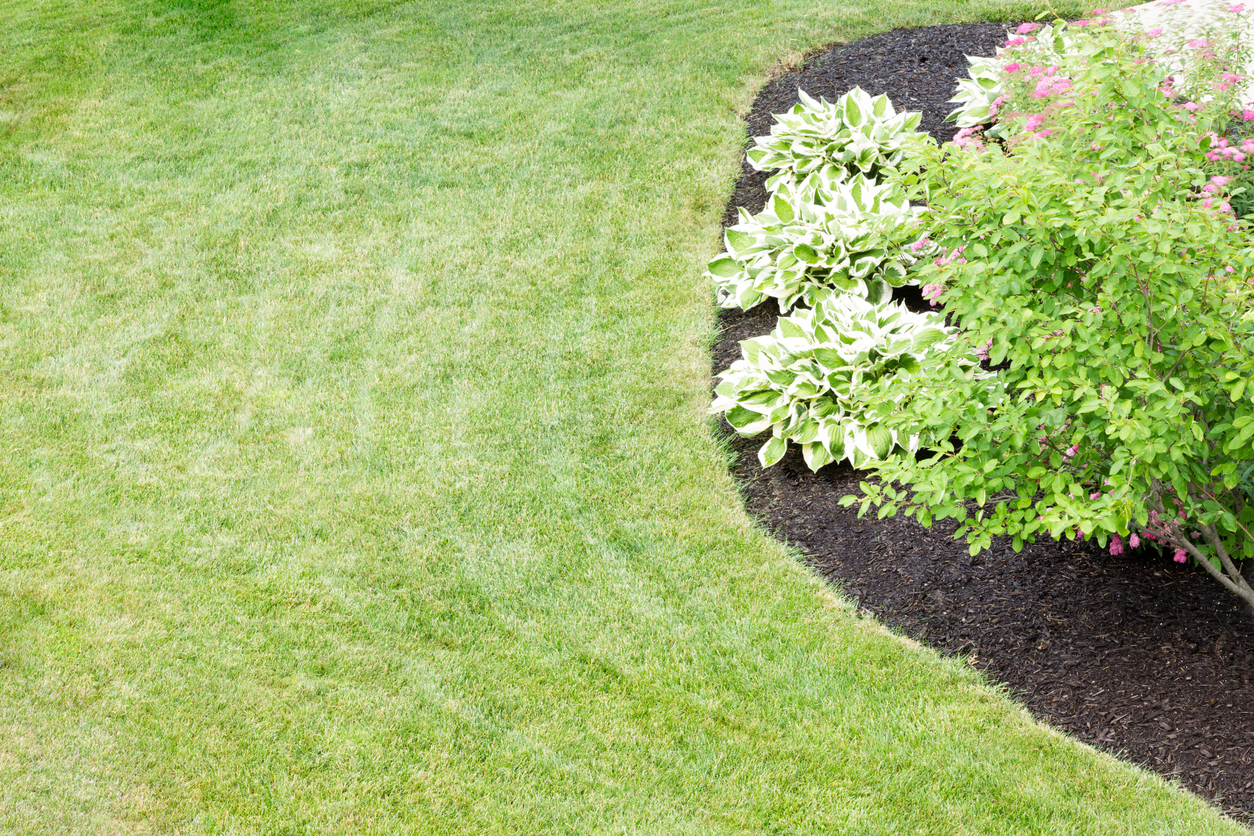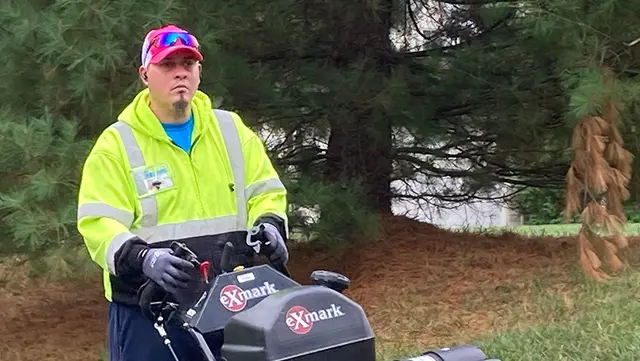
The Complete Guide to Spring Landscape Clean-Up
You’re getting warmer…
If you’re feeling ready to shake off the winter chill, chances are your landscape is, too. Help it emerge from the frigid temperatures in glorious form with a proper spring clean-up. In this guide, we’ll break down everything you need to know to help your landscape look as good as the warmer weather will feel. Come late February through early April, it’s game time. Ready, set… go!
Get Rid of Dead Weight
Herbaceous plants (those without woody stems) such as ornamental grasses and perennials should be cut back to a few inches above the soil line. You don’t have to worry about getting the timing just right; as long as significant new growth hasn’t yet emerged from the ground, you’re fine to cut back.

For shrubs that bloom on new growth, winter is the right time to prune a little or a lot depending on the plant and the effect you want. Be sure to prune these plants before new growth emerges in the spring.
Plants that bloom on new growth include:
- Roses
- Abelia
- Crape Myrtle
- Butterfly Bush
- Blue Mist Shrub
- Vitex or Chaste Tree
- PG and Annabelle Hydrangea
- St. John’s Wort or Hypericum
- Rose-of-Sharon
- Beautyberry
Evergreen shrubs don’t normally need a lot of attention but winter is a great time to shape and reduce their height if necessary. Give attention to Boxwood, Hollies, Euonymus, Privet, Juniper and Photinia.
Be a Little Edgy
Before you place new mulch, take a look at your bed edges. If your beds look like they could use a cleaner edge, now is the time to add definition. Doing it now before laying down new mulch will ensure the mulch stays in its intended location and grass and groundcover don’t wander.
To make a new edge, use a straight shovel and cut straight down 3 to 4 inches. Remove the grass clumps and place them in low areas in the lawn or divots from snow plows. Don’t throw the grass clump/soil away. Take the grass/soil clump and place upside down in the beds and cover with mulch.
Yank Those Weeds
It might seem obvious, but it bears repeating: remove weeds as soon as they appear. They will only get bigger. Some are winter weeds that germinated last fall and will spring into action as soon as the weather warms. Throwing mulch on top won’t make them go away. Proper removal requires a trowel or small weeding device to remove them, roots and all.
A pre-emergent herbicide can be applied to the surface of the soil after all the weeds have been removed but before laying down mulch. When a pre-emergent herbicide is applied to beds, tree rings and pavement cracks and curbs, it will stop weed seeds from germinating.
Create Fertile Ground
Not all plants require additional nutrients, but for those that do, spring is the time to do it. Most perennials, groundcovers, shrubs and ornamental flowering plants, like Roses, Abelia, Spirea, Azalea, Hydrangea, Forsythia, and Viburnum, benefit from a slow-release fertilizer placed under the mulch following site clean-up. Don’t worry about fertilizing ornamental grasses and larger trees in turf areas, which will receive all the nutrients they need from your turf fertilizer.
Find a fertilizer low in nitrogen (the first number) (5-10-5, 6-10-4) with at least 50% slow release nitrogen. Heavy feeders, such as roses, may need an additional application in a couple months.
And Finally, Mulch
Last, but not least, it’s time to mulch. Mulch is the super multi-tasker of your landscape. Mulch suppresses weed growth, reduces soil temperatures, retains moisture in the soil, reduces soil erosion, and enhances the curb appeal of your property.

Shredded hardwood is used in most areas, while many in the South use pine straw. These are excellent in shrub beds and around trees. For perennial beds, you should use a leaf mold, pine fines, compost or cocoa hulls. Whatever mulch you choose, make sure to apply it at the correct depth. The general rule of thumb is approximately 1-2 inches, though this can vary from plant to plant. For instance, 2 inches is a good estimate for many larger shrubs and trees, but may be too much for certain perennials or smaller, shallow-rooted shrubs. The key is to avoid piling mulch around the base of your trees, shrubs, or plants, as it can cause roots to suffocate and invite other problems like pests and stem cankers.
One final note—you don’t need to apply 2 inches of mulch each spring; you simply need to maintain the correct depth for your particular plants. This means augmenting your old mulch with new.
Follow these steps, and you’ll have a spring in your step in no time. Need more spring inspiration? Check out our top 5 recommendations for spring blooming plants.
Great Service, Beautiful Landscapes
Benefit from a comprehensive landscape maintenance plan designed to meet your needs and exceed your expectations, all delivered by a team invested in your success.



